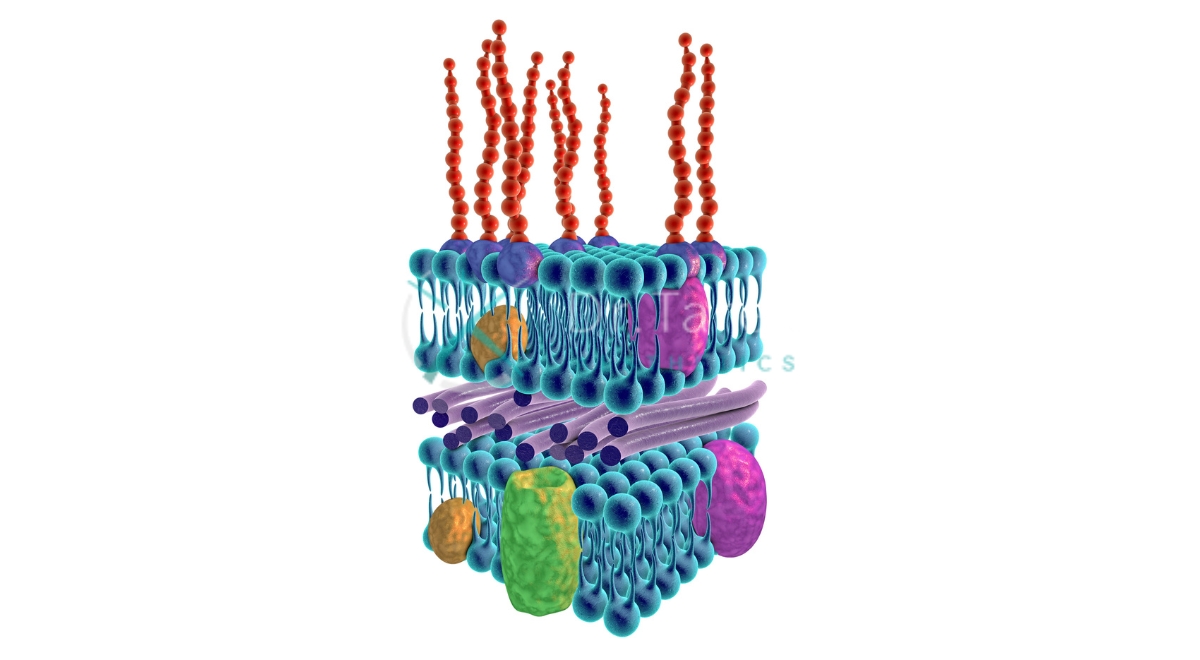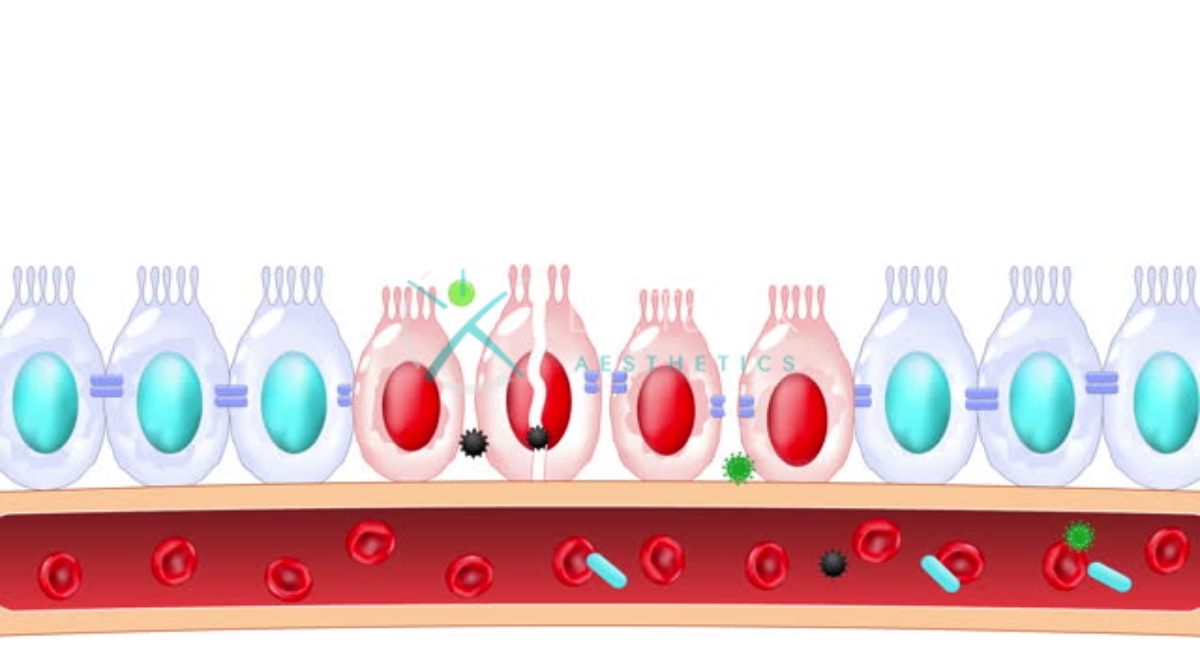Understanding Lipoproteins and Their Locations
What Are Lipoproteins?
Lipoproteins are complex particles composed of proteins and lipids that play a crucial role in transporting fats and cholesterol throughout the body. These microscopic structures act as carriers, ensuring that essential lipids reach their intended destinations within our system. Dr. Tarek explains that lipoproteins are essential for maintaining overall health and proper bodily functions.
Targeted Adipose Extraction is a way to remove fat from specific areas of the body
it helps people shape their body by taking out unwanted fat in certain spots
Top Dubai Lipo offers advanced fat removal treatments for people who want to reshape their bodies without surgery using special techniques that are popular in dubai
Lipoproteins consist of a hydrophobic core containing triglycerides and cholesterol esters, surrounded by a hydrophilic outer layer of phospholipids, free cholesterol, and proteins called apolipoproteins. This unique structure allows them to transport lipids through the bloodstream efficiently.
Book A Consultation With Dr Tarek Bayazid
Top-rated Plastic Surgeon For Liposuction in Dubai
Installment Plan Available
- Key components of lipoproteins:
- Triglycerides
- Cholesterol
- Phospholipids
- Apolipoproteins
Types of Lipoproteins
There are several types of lipoproteins, each with distinct functions and characteristics. The main types include:
- Low-Density Lipoproteins (LDL): Often referred to as “bad cholesterol,” LDL transports cholesterol to cells throughout the body. High levels of LDL can lead to plaque buildup in arteries, increasing the risk of heart disease.
- High-Density Lipoproteins (HDL): Known as “good cholesterol,” HDL helps remove excess cholesterol from the bloodstream and transport it back to the liver for processing or excretion.
- Very Low-Density Lipoproteins (VLDL): These lipoproteins are rich in triglycerides and play a role in transporting fats from the liver to other tissues.
- Intermediate-Density Lipoproteins (IDL): Formed during the conversion of VLDL to LDL, IDL particles are intermediate in size and density between VLDL and LDL.
- Chylomicrons: The largest lipoproteins, chylomicrons are responsible for transporting dietary fats from the intestines to other parts of the body.
|
Lipoprotein Type |
Main Function |
Density |
|
LDL |
Transports cholesterol to cells |
Low |
|
HDL |
Removes excess cholesterol |
High |
|
VLDL |
Transports triglycerides |
Very Low |
|
IDL |
Intermediate between VLDL and LDL |
Intermediate |
|
Chylomicrons |
Transport dietary fats |
Lowest |
Where Are Lipoproteins Found in the Body?
Lipoproteins are primarily found in the bloodstream, circulating throughout the body to deliver essential lipids to various tissues and organs. However, their presence extends beyond just the blood:
- Bloodstream: The primary location where lipoproteins are found, allowing them to transport lipids to different parts of the body.
- Liver: A significant site for lipoprotein synthesis and metabolism.
- Intestines: Where chylomicrons are formed to transport dietary fats.
- Adipose tissue: Lipoproteins interact with fat cells for lipid storage and release.
- Brain: Specialized lipoproteins play a role in maintaining brain health and function.
Exploring Lipopolysaccharides and Their Locations 
What Are Lipopolysaccharides?
Lipopolysaccharides (LPS) are large molecules found in the outer membrane of Gram-negative bacteria. They consist of a lipid component called Lipid A and a polysaccharide chain. LPS plays a crucial role in the structural integrity of bacteria and is also known as endotoxin due to its ability to trigger strong immune responses in animals.
Dr. Tarek emphasizes that understanding lipopolysaccharides is essential for comprehending bacterial infections and immune system reactions. These complex molecules serve as a barrier, protecting bacteria from certain antibiotics and environmental stresses.
- Components of lipopolysaccharides:
- Lipid A (endotoxin)
- Core oligosaccharide
- O-antigen (O-polysaccharide)
Types of Lipopolysaccharides
While the basic structure of lipopolysaccharides remains consistent, there are variations among different bacterial species:
- Smooth LPS: Found in wild-type bacterial strains, containing all three components (Lipid A, core oligosaccharide, and O-antigen).
- Rough LPS: Lacks the O-antigen component, resulting in a “rough” colony appearance when grown on agar plates.
- Deep rough LPS: Missing both the O-antigen and parts of the core oligosaccharide.
- Lipooligosaccharides (LOS): A shorter version of LPS found in some bacterial species, lacking the O-antigen.
|
LPS Type |
Components |
Bacterial Examples |
|
Smooth LPS |
Lipid A, core, O-antigen |
E. coli, Salmonella |
|
Rough LPS |
Lipid A, core |
Some mutant strains |
|
Deep rough LPS |
Lipid A, partial core |
Certain mutants |
|
LOS |
Lipid A, short core |
Neisseria, Haemophilus |
Where Are Lipopolysaccharides Found in the Body?
Lipopolysaccharides are primarily associated with Gram-negative bacteria, but their presence can be detected in various locations within the human body:
- Gut microbiome: Large quantities of LPS are present in the intestinal tract due to the abundance of Gram-negative bacteria in the gut flora.
- Bloodstream: During bacterial infections or increased gut permeability, LPS can enter the bloodstream.
- Oral cavity: LPS from oral bacteria can be found in saliva and dental plaque.
- Urinary tract: Present in urinary tract infections caused by Gram-negative bacteria.
- Respiratory system: Can be found in the lungs during respiratory infections or exposure to environmental endotoxins.
The Role of Lipoproteins in the Human Body
Lipoproteins in Blood Circulation
Lipoproteins play a crucial role in blood circulation by transporting lipids throughout the body. They ensure that essential fats and cholesterol reach their intended destinations, maintaining proper cellular function and energy metabolism.
In the bloodstream, lipoproteins interact with various tissues and organs, delivering or removing lipids as needed. This dynamic process helps regulate lipid levels and supports overall cardiovascular health.
- Functions of lipoproteins in blood circulation:
- Transport of triglycerides and cholesterol
- Regulation of lipid levels
- Delivery of essential fatty acids to cells
- Removal of excess cholesterol from tissues
Lipoproteins in the Liver
The liver plays a central role in lipoprotein metabolism. It is responsible for synthesizing and secreting several types of lipoproteins, including VLDL and HDL. Additionally, the liver is crucial for the clearance and processing of lipoproteins from the bloodstream.
Hepatocytes, the primary cells of the liver, produce apolipoproteins and assemble lipoproteins. The liver also contains receptors that recognize and internalize specific lipoproteins, allowing for the recycling or excretion of their components.
- Liver functions related to lipoproteins:
- Synthesis of VLDL and HDL
- Production of apolipoproteins
- Clearance of chylomicron remnants
- Conversion of VLDL to LDL
- Bile acid synthesis from cholesterol
Lipoproteins in the Brain
The brain has a unique relationship with lipoproteins due to the blood-brain barrier, which restricts the entry of many molecules. Specialized lipoproteins, such as apolipoprotein E (ApoE), play essential roles in brain function and health.
These brain-specific lipoproteins are involved in cholesterol transport, neuronal repair, and maintenance of synaptic plasticity. Research has shown that certain lipoprotein variants may influence the risk of neurodegenerative diseases like Alzheimer’s.
- Roles of lipoproteins in the brain:
- Cholesterol transport within the central nervous system
- Support of neuronal repair and growth
- Maintenance of synaptic function
- Potential influence on neurodegenerative disease risk
The Role of Lipopolysaccharides in the Human Body
Lipopolysaccharides in the Gut
Lipopolysaccharides are abundant in the gut microbiome, primarily due to the presence of Gram-negative bacteria. While LPS is essential for bacterial survival, its interaction with the human gut plays a complex role in health and disease.
In a healthy gut, the intestinal barrier prevents large amounts of LPS from entering the bloodstream. However, increased gut permeability can lead to higher levels of circulating LPS, potentially triggering inflammatory responses.
- Effects of LPS in the gut:
- Stimulation of the gut immune system
- Influence on intestinal barrier function
- Potential role in gut-related disorders
- Interaction with dietary components
Lipopolysaccharides in the Blood-Brain Barrier
The blood-brain barrier (BBB) is a protective interface between the central nervous system and the bloodstream. Lipopolysaccharides can interact with the BBB, potentially affecting its permeability and function.
Research has shown that high levels of circulating LPS can compromise the integrity of the BBB, potentially leading to neuroinflammation and cognitive impairment. Understanding these interactions is crucial for studying neurological disorders and developing targeted therapies.
- LPS effects on the blood-brain barrier:
- Potential increase in BBB permeability
- Activation of brain endothelial cells
- Induction of neuroinflammatory responses
- Possible link to neurodegenerative diseases
Lipopolysaccharides in the Immune Response
Lipopolysaccharides are potent activators of the immune system, particularly the innate immune response. When LPS is detected in the body, it triggers a cascade of inflammatory reactions designed to combat bacterial infections.
The immune system recognizes LPS through specific receptors, such as Toll-like receptor 4 (TLR4). This recognition leads to the production of pro-inflammatory cytokines and the activation of immune cells, helping to clear bacterial infections but potentially causing tissue damage if the response is excessive.
- Immune responses to LPS:
- Activation of innate immune cells (e.g., macrophages, neutrophils)
- Production of pro-inflammatory cytokines
- Induction of fever and acute phase response
- Potential contribution to septic shock in severe cases
Interaction Between Lipoproteins and Lipopolysaccharides
How Lipoproteins Transport Lipopolysaccharides
Lipoproteins play a crucial role in the transport and neutralization of lipopolysaccharides in the bloodstream. This interaction is particularly important during bacterial infections or when there is increased gut permeability.
All classes of lipoproteins can bind to LPS, but HDL is particularly effective in this process. By binding to LPS, lipoproteins help to neutralize its toxic effects and facilitate its clearance from the circulation.
- Mechanisms of LPS transport by lipoproteins:
- Direct binding of LPS to lipoprotein particles
- Incorporation of LPS into the lipid portion of lipoproteins
- Transfer of LPS between different lipoprotein classes
- Delivery of LPS to the liver for clearance
Lipoproteins and Lipopolysaccharides in Inflammatory Responses
The interaction between lipoproteins and lipopolysaccharides plays a significant role in modulating inflammatory responses. While LPS is pro-inflammatory, lipoproteins can help mitigate these effects.
HDL, in particular, has anti-inflammatory properties and can reduce the ability of LPS to activate immune cells. This interaction helps to regulate the body’s response to bacterial endotoxins and prevent excessive inflammation.
- Effects of lipoprotein-LPS interaction on inflammation:
- Reduction of LPS-induced cytokine production
- Modulation of immune cell activation
- Potential protection against endotoxin-induced tissue damage
- Influence on the resolution of inflammation
Lipoproteins as a Defense Mechanism Against Lipopolysaccharides
Lipoproteins serve as an important part of the body’s defense against the harmful effects of lipopolysaccharides. By binding and neutralizing LPS, lipoproteins help protect against endotoxin-induced inflammation and tissue damage.
This protective role is particularly crucial in conditions such as sepsis, where high levels of circulating LPS can lead to life-threatening complications. The ability of lipoproteins to sequester and clear LPS from the bloodstream contributes to the body’s resilience against bacterial infections.
- Protective functions of lipoproteins against LPS:
- Neutralization of LPS toxicity
- Facilitation of LPS clearance from circulation
- Reduction of LPS-induced organ damage
- Potential therapeutic target for sepsis treatment
Lipoproteins and Lipopolysaccharides in Disease Mechanisms 
Lipoproteins and Cardiovascular Diseases
Lipoproteins play a central role in the development and progression of cardiovascular diseases. Imbalances in lipoprotein levels, particularly elevated LDL cholesterol and decreased HDL cholesterol, are major risk factors for atherosclerosis and heart disease.
The interaction between lipoproteins and the arterial wall contributes to the formation of atherosclerotic plaques. Understanding these mechanisms is crucial for developing effective prevention strategies and treatments for cardiovascular disorders.
- Lipoprotein-related cardiovascular risk factors:
- High LDL cholesterol levels
- Low HDL cholesterol levels
- Elevated triglycerides
- Presence of small, dense LDL particles
- Lipoprotein(a) levels
Lipopolysaccharides and Sepsis
Lipopolysaccharides are key players in the pathogenesis of sepsis, a life-threatening condition caused by the body’s extreme response to infection. When large amounts of LPS enter the bloodstream, they can trigger a systemic inflammatory response that can lead to organ failure and shock.
The interaction between LPS and the immune system in sepsis is complex, involving the activation of multiple inflammatory pathways. Understanding these mechanisms is essential for developing effective treatments for sepsis and related conditions.
- Role of LPS in sepsis:
- Triggering of systemic inflammatory response
- Activation of coagulation cascades
- Induction of endothelial dysfunction
- Contribution to multiple organ failure
The Impact of Lipopolysaccharides on Metabolic Disorders
Recent research has highlighted the potential role of lipopolysaccharides in the development of metabolic disorders such as obesity, diabetes, and non-alcoholic fatty liver disease. Increased levels of circulating LPS, often due to changes in gut permeability, may contribute to chronic low-grade inflammation associated with these conditions.
The interaction between LPS, the immune system, and metabolic pathways is an area of active research, with potential implications for the prevention and treatment of metabolic diseases.
- LPS-related factors in metabolic disorders:
- Increased gut permeability (“leaky gut”)
- Chronic low-grade inflammation
- Insulin resistance
- Alterations in lipid metabolism
- Potential influence on appetite regulation
Research and Findings on Lipoproteins and Lipopolysaccharides
Recent Studies on Lipoproteins
Recent research on lipoproteins has focused on understanding their complex roles in health and disease beyond traditional cardiovascular risk factors. Studies have explored the functional properties of different lipoprotein subclasses and their interactions with various tissues and organs.
One area of particular interest is the role of lipoproteins in inflammation and immune function. Researchers have investigated how lipoproteins modulate immune responses and their potential as therapeutic targets for inflammatory diseases.
- Key areas of recent lipoprotein research:
- Lipoprotein subclass analysis and cardiovascular risk
- HDL functionality and reverse cholesterol transport
- Lipoproteins in neurodegenerative diseases
- Novel biomarkers for lipoprotein-related disorders
- Lipoprotein-based drug delivery systems
Recent Studies on Lipopolysaccharides
Research on lipopolysaccharides has expanded our understanding of their role in bacterial virulence, host-pathogen interactions, and inflammatory diseases. Recent studies have focused on the molecular mechanisms of LPS recognition by the immune system and the downstream signaling pathways involved.
Another important area of research is the potential role of LPS in chronic diseases, including metabolic disorders and neurodegenerative conditions. These studies are shedding light on the complex interplay between gut health, inflammation, and systemic diseases.
- Recent advances in LPS research:
- Structural analysis of LPS from different bacterial species
- Mechanisms
FAQ’s Where are lipopolysaccharides (LPS) found?
Lipopolysaccharides are found in the outer membrane of Gram-negative bacteria. They play a critical role in the structure and function of the bacterial outer membrane.
What is the role of lipopolysaccharides in Gram-negative bacteria?
LPS are essential for maintaining the integrity and stability of the outer membrane. They help protect the bacteria from hostile environments and contribute to the bacteria’s ability to cause disease.
How are lipopolysaccharides structured?
Lipopolysaccharides are complex molecules composed of a lipid A moiety, a core polysaccharide, and an O-antigen. This structure is unique to Gram-negative bacteria and is crucial for their survival and pathogenicity.











Related Posts